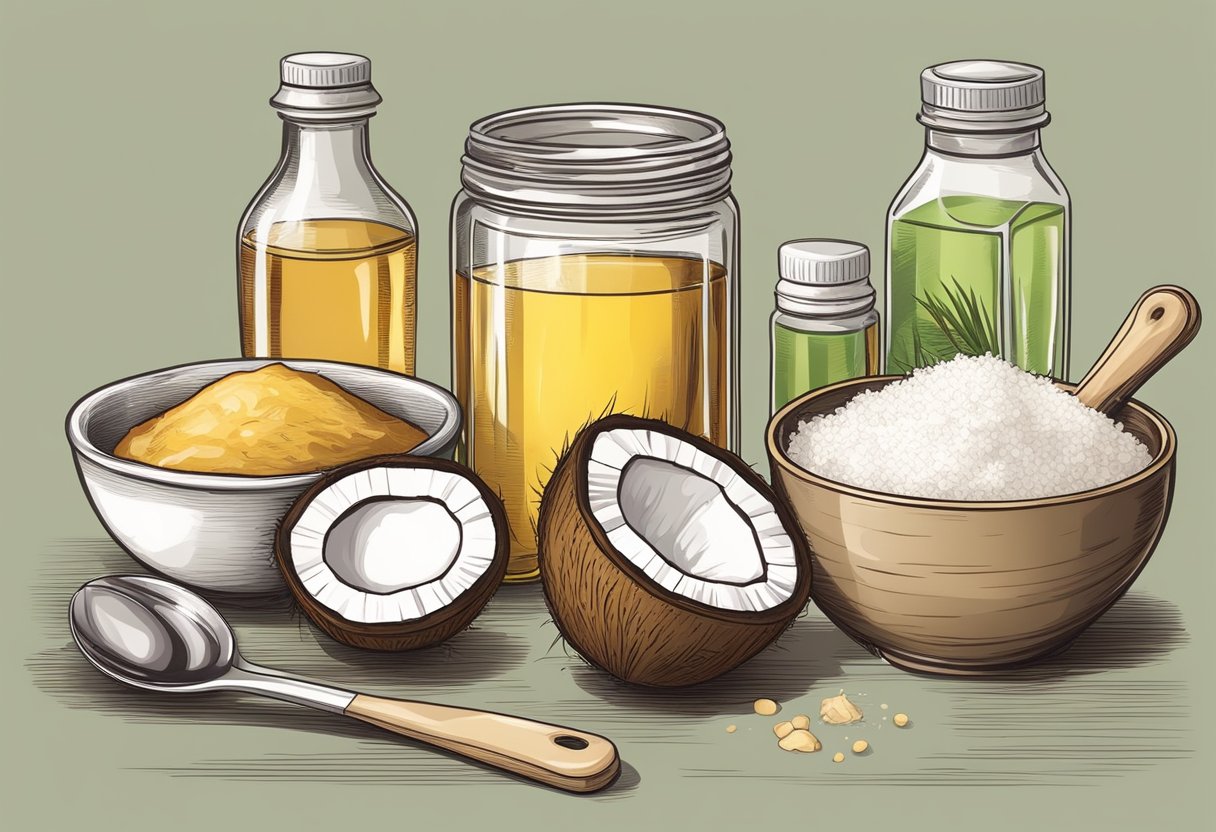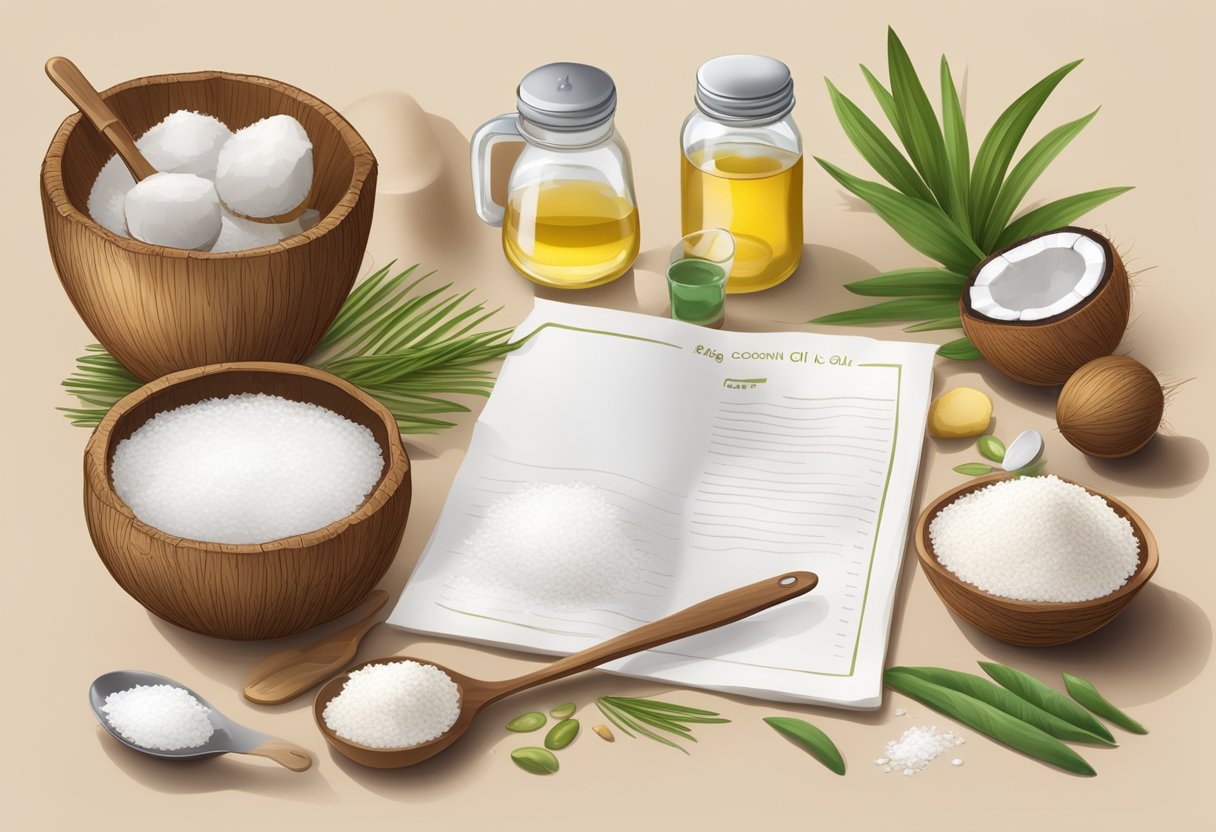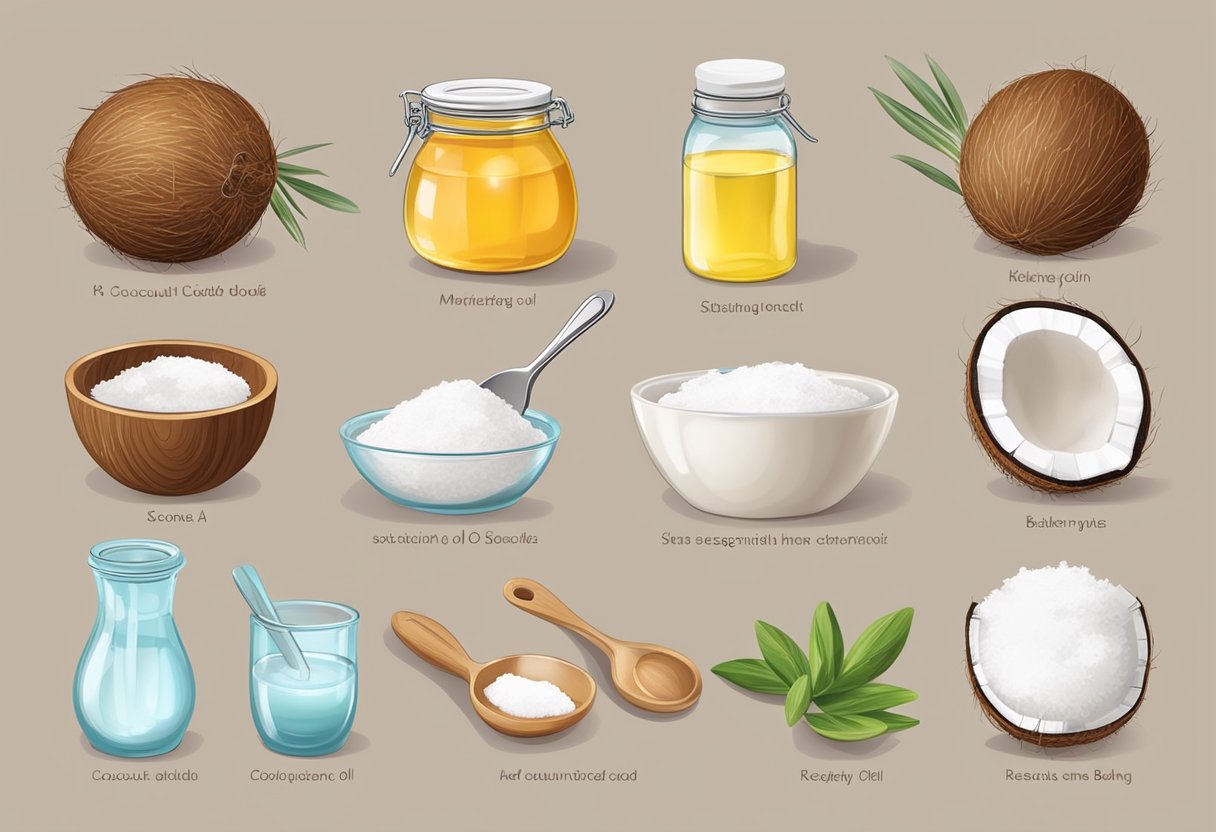Making homemade deodorant can be a great way to avoid the potentially harmful chemicals found in many store-bought deodorants. With a few simple ingredients, it is possible to create a natural, effective deodorant that is free from aluminum, parabens, and other additives.

One of the key ingredients in many homemade deodorants is baking soda. Baking soda has antibacterial and anti-fungal properties, and it is effective at absorbing moisture. Other common ingredients include coconut oil, shea butter, essential oils, and arrowroot powder.
While natural deodorants may not prevent sweating entirely, they can help to control odor and keep you feeling fresh throughout the day. By making your own deodorant, you can customize the scent and consistency to suit your preferences. With a little bit of experimentation, you can find the perfect recipe for your needs.
Understanding Deodorant

Benefits of Homemade Deodorant
Deodorants are used to control body odor caused by the bacterial breakdown of perspiration. Homemade deodorants are free from harmful chemicals and are made from natural ingredients. They are easy to make and cost-effective. Homemade deodorants are also customizable, allowing individuals to create a deodorant that works best for their skin type and personal preferences.
Homemade deodorants are usually made from a combination of natural ingredients such as coconut oil, baking soda, arrowroot powder, and essential oils. These ingredients have antimicrobial properties, which help to control the growth of odor-causing bacteria. They are also moisturizing and soothing for the skin, making them a great alternative to chemical-laden commercial deodorants.
Natural Ingredients vs. Chemicals
Commercial deodorants often contain harmful chemicals such as aluminum, parabens, and phthalates. These chemicals have been linked to health problems such as breast cancer, Alzheimer’s disease, and hormonal imbalances.
Homemade deodorants, on the other hand, are made from natural ingredients that are safe and non-toxic. They do not contain any harmful chemicals and are gentle on the skin. Natural ingredients such as coconut oil, baking soda, and essential oils have been used for centuries for their medicinal and therapeutic properties.
In summary, homemade deodorants are a great alternative to commercial deodorants. They are easy to make, cost-effective, and customizable. They are also free from harmful chemicals and are made from natural ingredients that are safe and non-toxic.
Gathering Materials

Making homemade deodorant requires a few essential materials that are easy to find. In this section, we will discuss the necessary materials and tools to make homemade deodorant.
Essential Oils Selection
Essential oils are an essential ingredient in homemade deodorant. They provide natural fragrance and have antibacterial properties that help to combat odor. Some popular essential oils for deodorant include tea tree, lavender, peppermint, and lemon.
When selecting essential oils, it is important to choose high-quality oils that are pure and free from synthetic additives. It is recommended to use 10-20 drops of essential oil per batch of deodorant.
Natural Bases and Butters
Natural bases and butters are the foundation of homemade deodorant. They provide the necessary texture and consistency to hold the deodorant together. Some popular natural bases and butters for deodorant include coconut oil, shea butter, beeswax, and arrowroot powder.
When selecting natural bases and butters, it is important to choose organic and unrefined products. These products are free from harmful chemicals and provide the best results.
Tools and Containers
To make homemade deodorant, a few basic tools are required. These include a double boiler or a heatproof bowl, a whisk or a spoon, and a container to store the deodorant.
It is recommended to use glass or stainless steel containers to store the deodorant. These materials are non-reactive and do not leach harmful chemicals into the deodorant.
In conclusion, gathering the necessary materials and tools is the first step in making homemade deodorant. By selecting high-quality essential oils, natural bases and butters, and using the right tools and containers, you can create a natural and effective deodorant that is free from harmful chemicals.
The Basic Recipe

Making homemade deodorant is a simple and cost-effective way to reduce exposure to chemicals found in commercial deodorants. The basic recipe requires only a few ingredients that can be easily found at any grocery store. Here’s how to make it.
Measuring Ingredients
The ingredients for the basic recipe are as follows:
- 1/4 cup baking soda
- 1/4 cup cornstarch or arrowroot powder
- 3-5 tablespoons coconut oil
- Essential oils (optional)
Measure out the baking soda and cornstarch or arrowroot powder and combine them in a small bowl. Baking soda is the active ingredient that helps to neutralize odor, while cornstarch or arrowroot powder helps to absorb moisture. Adjust the ratio of baking soda to cornstarch or arrowroot powder to suit your needs.
Next, measure out the coconut oil. Coconut oil is used as a base to hold the other ingredients together and provide moisturizing benefits. The amount of coconut oil needed may vary depending on the desired consistency. Add more coconut oil for a smoother, creamier texture, or less for a firmer, more solid texture.
Mixing Procedure
To make the basic recipe, follow these steps:
- Melt the coconut oil in a double boiler or in the microwave until it is completely liquid.
- Add the baking soda and cornstarch or arrowroot powder to the melted coconut oil and stir until well combined.
- If desired, add a few drops of essential oils to scent the deodorant. Some popular essential oils for deodorant include lavender, tea tree, and peppermint.
- Pour the mixture into a clean, empty deodorant container or a small jar with a lid.
- Allow the mixture to cool and solidify before using.
That’s it! The basic recipe can be customized with different scents and essential oils to suit your preferences. It is also possible to adjust the ratio of ingredients to create a deodorant that is more suited to your needs.
Customizing Your Deodorant

Making homemade deodorant allows for a lot of customization options. Here are some ways to personalize your deodorant to fit your preferences and needs.
Scent Variations
One of the best things about making your own deodorant is that you can choose your own scent. Essential oils are a great way to add fragrance to your deodorant. Lavender, tea tree, and peppermint are popular choices. You can also combine different oils to create your own unique scent.
Texture Adjustments
The texture of your homemade deodorant can be adjusted to fit your preferences. If you prefer a more solid deodorant, you can add more beeswax or cocoa butter to the recipe. If you prefer a softer deodorant, you can reduce the amount of beeswax or cocoa butter. Adding more arrowroot powder or cornstarch can also thicken the mixture.
Skin Sensitivity Considerations
If you have sensitive skin, you may want to adjust the recipe to avoid irritation. Baking soda can be irritating to some people, so reducing the amount or leaving it out altogether can help. Arrowroot powder or cornstarch can be used as a substitute. You can also add more coconut oil or shea butter to make the mixture more moisturizing.
It is important to note that everyone’s skin is different, so it may take some trial and error to find the perfect combination of ingredients for your homemade deodorant.
Application and Use

How to Apply
Homemade deodorant can be applied in the same way as any other deodorant. First, make sure your underarms are clean and dry before applying. Take a small amount of the deodorant and apply it directly to your underarms. Rub it in gently with your fingers until it is absorbed by the skin.
It is important to note that homemade deodorant may feel different from commercial deodorants. It may have a different texture or consistency, and may take longer to absorb into the skin. However, with regular use, most people find that their skin adjusts to the new product.
Storage and Shelf Life
Homemade deodorant should be stored in a cool, dry place to prevent melting or spoilage. If you live in a warm climate, you may want to store your deodorant in the refrigerator to keep it solid.
The shelf life of homemade deodorant can vary depending on the ingredients used. Generally, a batch of homemade deodorant can last for several months if stored properly. However, it is important to check the ingredients for signs of spoilage or rancidity before each use.
To extend the shelf life of your homemade deodorant, consider adding natural preservatives such as vitamin E oil or grapefruit seed extract. These ingredients can help prevent spoilage and extend the life of your product.
Overall, homemade deodorant can be a great alternative to commercial deodorants for those who are looking for a natural and affordable option. With proper application and storage, homemade deodorant can be an effective way to stay fresh and odor-free throughout the day.
Troubleshooting Common Issues

Dealing with Irritation
One of the most common issues with homemade deodorant is skin irritation. Some people may experience a rash or redness after using it for a few days. This is often caused by the baking soda in the recipe, which can be too harsh for some skin types.
To deal with irritation, it is recommended to try reducing the amount of baking soda in the recipe or using a different type of baking soda that is less abrasive. Another option is to add more moisturizing ingredients like shea butter or coconut oil to the recipe to soothe the skin.
Managing Consistency Problems
Another issue that people may face when making homemade deodorant is consistency problems. The deodorant may be too hard, too soft, or may separate over time.
To manage consistency problems, it is recommended to adjust the ratio of ingredients in the recipe. For example, adding more beeswax can make the deodorant harder, while adding more coconut oil can make it softer. It is also important to mix the ingredients thoroughly and store the deodorant in a cool, dry place to prevent separation.
Overall, troubleshooting common issues with homemade deodorant can be challenging, but with a little experimentation and adjustment, it is possible to create a recipe that works well for each individual’s unique needs.
Frequently Asked Questions

What are the most effective ingredients for homemade deodorant?
The most effective ingredients for homemade deodorant are those that have natural antimicrobial properties and can absorb moisture. Baking soda, arrowroot powder, and cornstarch are commonly used as absorbents. Essential oils such as tea tree, lavender, and lemon are also used for their antibacterial properties.
Can you create an effective natural deodorant spray at home?
Yes, it is possible to create an effective natural deodorant spray at home. Witch hazel, distilled water, and essential oils can be combined to make a refreshing and odor-fighting spray. However, it is important to note that sprays may not be as effective as solids or pastes.
What is the best recipe for a homemade deodorant that really works?
The best recipe for a homemade deodorant that really works may vary depending on personal preferences and skin type. A popular recipe includes mixing 1/4 cup of baking soda, 1/4 cup of arrowroot powder, 3 tablespoons of coconut oil, and 10-15 drops of essential oil. However, it is important to note that baking soda may cause irritation for some people.
How do you make a natural deodorant without using baking soda?
A natural deodorant can be made without using baking soda by substituting it with other absorbent ingredients such as arrowroot powder or cornstarch. Coconut oil and shea butter can be used as a base, and essential oils can be added for fragrance and antimicrobial properties.
Is it possible to make a homemade deodorant with beeswax, and how?
Yes, it is possible to make a homemade deodorant with beeswax. Beeswax can be melted with coconut oil or shea butter, and then mixed with absorbent ingredients such as baking soda or arrowroot powder. Essential oils can also be added for fragrance and antimicrobial properties. The mixture can be poured into a container and allowed to cool and solidify.

